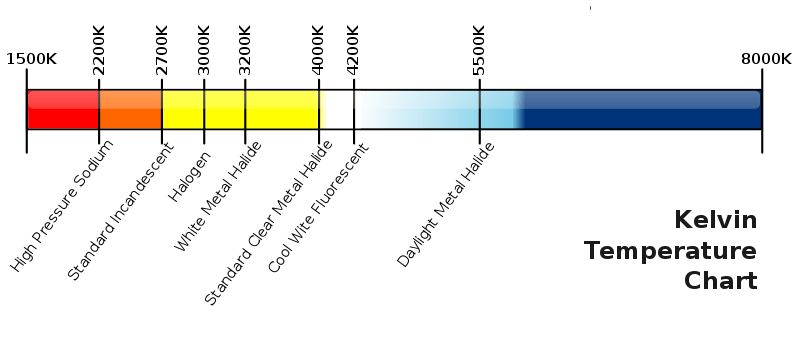Guidelines for Practical LED Lighting
The Promise and Challenges of LED Lighting
The light-emitting diode (LED) is transforming the way we light our cities and towns, offering a once-in-a-lifetime chance to radically improve how we use energy and our outdoor spaces at night. With this opportunity comes an obligation to manage these changes responsibly and sustainably. The stakes are high and the potential rewards great, but outcomes depend critically on policymakers and the public having access to reliable information. IDA developed this document to provide planners, lighting designers and public officials an overview of the most important aspects of LED lighting and the choices and challenges involved in its municipal implementation.
What are LEDs?
LEDs use solid-state technology to convert electricity into light. Put simply, LEDs are very small light bulbs that fit into an electrical circuit. Unlike traditional incandescent bulbs, they don’t have a filament that burns out and they don’t get very warm. Initially, LEDs only emitted red, yellow, or green light, but now white LEDs are widely available. Early LEDs were also energy-inefficient and emitted little light, but due to technological advances LED efficiency and light output have doubled about every three years. Because of their improved quality and falling prices, LEDs are now replacing conventional high-intensity discharge (HID) lamp types for outdoor lighting in communities around the world.
Why Adopt This Technology?
The improved energy efficiency of LEDs means that, coupled with modern luminaire design, these lights allow for reduced illuminance without compromising safety. LEDs help lower carbon emissions by reducing the demand for electricity, which is still largely generated by burning fossil fuels. Another LED benefit is better control over the color content of light. Manufacturers now produce LEDs with “warm” color qualities at high energy efficiency, rendering old arguments about the perceived inefficiency of warm white LEDs moot. These same LED options also provide accurate color rendition without emitting excessive amounts of potentially harmful blue light (see below).
Relative to other outdoor lamps, LEDs are thought to be extremely long-lived. When switched on, LEDs are instantly at full brightness, unlike HID lamps that have a significant time delay to begin emitting light. LEDs also have very low minimum electricity thresholds to produce light, meaning they can be dimmed to much lower illumination levels when less light is needed and resulting in further energy savings.
Product Selection Considerations
Choosing LED products for outdoor lighting applications involves a series of considerations and tradeoffs. These include:
- Luminous Efficiency (Watts-to-lumens): How many lumens of light are produced per input Watt of electricity? More importantly, how many lumens from the light source are meeting the task (“Fixture Lumens” vs. “Lamp Lumens”)
- Lumen Output: How much light is produced relative to the amount required for a particular task? When replacing existing fixtures, it is important to use the only level of illumination needed, and not to adopt unneeded increases in brightness.
- Correlated Color Temperature (CCT): Does the light have a “warm” or “cool” quality?
- Color Rendering Index (CRI): How accurately does the light render colors to the human eye? A high CRI is not needed for all situations. The need for good color rendition should be considered relative to the lighting application in question.
- Adaptive Control Integration: Does the lighting make use of adaptive controls such as dimmers, timers, and/or motion sensors? These controls are the wave of the future in outdoor lighting and achieve additional energy savings, improve light source efficacy and increase visual task performance. It is important to build in the ability to make use of adaptive controls during the adoption of designs for new lighting installations, even if they will not immediately be implemented.
- Heat Mitigation: Is the lamp housing designed to adequately dissipate heat? Because LED efficiency decreases with rising operating temperature, controlling heat emitted by LED lamps is critical in warm climates.
- Lumen Depreciation: How robust is the lamp against efficiency loss over time? Manufacturers typically quote “L70,” the expected use time until a bulb reaches 70% of its initial light output.
Closely related to all these factors is expense: How much will LED replacement solutions cost? The price of commercial LED lighting products continues to drop, and capital cost recovery times for new LED street light installations, once 10 years or more, are now typically less than five years and continue to decline. As barriers to implementation fall, LED is gaining momentum as the lighting technology of choice in both new outdoor installations and existing replace-on-failure installations.
Blue Light at Night Is Bad
New technical capabilities often come with unanticipated challenges. White LED lighting often has significant levels of potentially hazardous blue light. In 2010, IDA published its 2010 white paper, “Visibility, Environmental, and Astronomical Issues Associated with Blue-Rich White Outdoor Lighting,” detailing the hazards of blue-rich white light sources. In the years since, scientific evidence has solidified around its conclusions.
A June 2016 American Medical Association (AMA) report, “Human and Environmental Effects of Light Emitting Diode Community Lighting,” concluded that “white LED street lighting patterns [may] contribute to the risk of chronic disease in the populations of cities in which they have been installed.” The AMA recommends “minimizing and controlling blue-rich environmental lighting by using the lowest emission of blue light possible” in order to reduce potential negative effects on human health.
Concerns about blue light reach far beyond our health. Outdoor lighting with strong blue content is likely to worsen skyglow because it has a significantly larger geographic reach than lighting consisting of less blue. According to the 2016 “World Atlas of Artificial Night Sky Brightness” street lighting and outdoor lighting retrofits using 4000K lamps could result in a factor of 2.5 increase in light pollution. Given that the rate of increase of lighting as seen from Earth orbit is about 2 percent per year, and much of the increase is attributable to white LED, it is all the more important to address this problem.
Blue-rich white light sources are also known to increase glare and compromise human vision, especially in the aging eye. These lights create potential road safety problems for motorists and pedestrians alike. In natural settings, blue light at night has been shown to adversely affect wildlife behavior and reproduction. This particularly true in cities, which are often stopover points for migratory species.

The promise of cheaper outdoor lighting based on electricity and maintenance savings from LED conversion should be weighed against other factors, such as the blue light content of white LEDs. Blue-rich sources are the most efficient LEDs in terms of the conversion of electricity to light, and therefore have the lowest electricity cost to produce a given amount of light compared to “warmer,” less efficient white LED lamps. Every effort should be made to diminish or eliminate blue light exposure after dark.
Comal County Friends of the Night Sky Recommends
Already many white LED options are available on the outdoor lighting market and that number will only rise in the future. CCFNA has adopted a set of recommendations for those choosing lighting systems from IDA. These suggestions will aid in the selection of lighting that is energy and cost efficient, yet ensures safety and security, protects wildlife, and promotes the goal of dark night skies. These include:
- Always choose fully shielded fixtures that emit no light upward
- Use “warm-white” or filtered LEDs (CCT < 3,000 K; S/P ratio < 1.2) to minimize blue emission
- Look for products with adaptive controls like dimmers, timers, and motion sensors
- Consider dimming or turning off the lights during overnight hours
- Avoid the temptation to over-light because of the higher luminous efficiency of LEDs.
- Only light the exact space and in the amount required for particular tasks
Get Involved

Protect your community from Light Pollution!
The Comal County Friends of the Night Sky was formed in March, 2020 by a group of concerned residents who first met using Zoom. We are working on several initiatives to facilitate night sky friendly lighting in order to preserve and improve the stunning night sky of the Texas Hill Country and Comal County, TX.
Learn About Upcoming Events
Subscribe to our Newsletter to keep up with our upcoming events!
